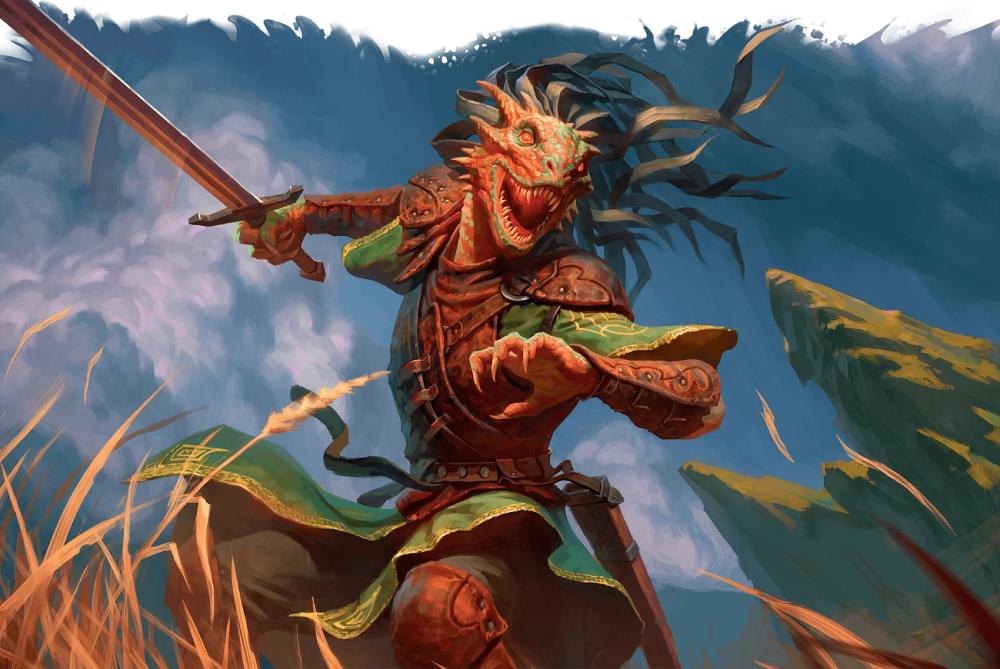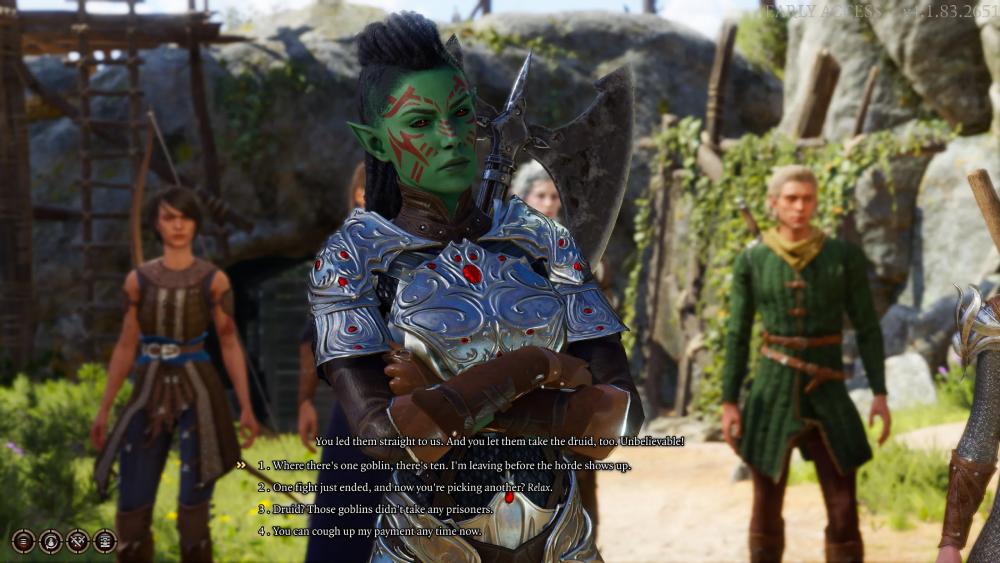Physical Address
304 North Cardinal St.
Dorchester Center, MA 02124
Physical Address
304 North Cardinal St.
Dorchester Center, MA 02124

Hey, fellow gamers! Are you eagerly waiting for the Dragonborn race to be added to Baldur’s Gate 3? Well, the good news is that there is still hope! Although the race is not yet available in the game, it might make its way to the forthcoming patch. So, keep your fingers crossed and your gaming setup ready for action! In the meantime, let’s dive deeper into the classes and features that Baldur’s Gate 3 currently offers.

Dragonborn is a race of humanoid creatures with dragon ancestry, introduced to the D&D multiverse in the third edition. They lack wings or a tail but possess the might of their dragon ancestors, including a potent breath weapon attack. All Dragonborn receive +2 to Strength and +1 to Charisma, and players can choose one of ten draconic types, which determines their breath weapon type and the type of damage resistance they receive. The creators of Baldur’s Gate 3 will have a tough decision on their hands when adapting the Dragonborn race to the game, as the race was recently overhauled in Fizban’s Treasury of Dragons. The developers may stick with the Player’s Handbook version for simplicity’s sake while boosting the breath weapon or create a new version that uses a mixture of the two rule sets.

Dragonborn in Baldur’s Gate 3 possess many unique abilities that set them apart from other races. They are naturally charismatic and strong, and have a powerful inner strength that allows them to push through injuries and heal more quickly than other humanoids. Most notably, Dragonborn possesses a breath weapon that varies in nature depending on their draconic heritage, and they also have a natural resistance to the same kind of energy as their breath weapon.
In terms of personality, Dragonborn in Baldur’s Gate 3 is dedicated to honor and view all living things as deserving of respect, even their enemies. They have a strong drive for self-improvement and value the skill of individuals, including themselves. This dedication to excellence can sometimes be seen as pride or arrogance by other races, but Dragonborn is willing to recognize and respect the accomplishments of others. They are enthusiastic about life and brood about failure for only a short time before using their disappointment as a drive for improvement. Trust is a major factor in their lives, and they expect others to be as open and forthcoming with them as they are.
Dragonborn in Baldur’s Gate 3 have a strong sense of independence and self-worth, but they do not view this as a need to break away from society. Instead, they see themselves as responsible for those around them and strive to shape society for the better through their unique strengths and weaknesses. Dragonborn has a collective sense of self while retaining their individuality, and they hold themselves accountable for their choice of allies. While good Dragonborn is fairly common, the passionate nature of the race can also make them brutal or vengeful, and they are not immune to falling into morally compromising situations. However, even Dragonborn who turns to evil often retains the scruples and values that define the race, including respect and courtesy to enemies.

The origins of the Dragonborn race are shrouded in myth and uncertainty. While the Tel’Quessir and dwarves know their origins, the Dragonborn have no clear understanding of where they came from. However, Faerunian sages believed that Dragonborn were either the original inhabitants of Unther transformed into draconic beings or experiments created by the followers of Tiamat in the ruins of Unther. Both beliefs were proved wrong, as Dragonborn were actually denizens from Abeir.
Legends of Abeir tell that Io, the first and greatest of the dragon gods, created the Dragonborn as servants for the first dragons. Other tales suggest that Io was killed in the war between the gods and the primordials, and the Dragonborn sprang from his spilled blood. The Platinum Cadre had an alternative theory, positing that the Dragonborn were ancient creations of the Platinum Dragon, Bahamut. However, this theory was not widely accepted by the Dragonborn of Tymanther.
Regardless of their origin, Dragonborn were the slaves of dragons for millennia, and rebellions were rare and often unsuccessful. Tymanchebar was one of the few successful rebellions, but it was believed to have been destroyed during the Spellplague. Despite this tragedy, the Abeiran expatriates of the new nation of Tymanther remained strong and formed a steady homeland for the Dragonborn of Toril, gaining acceptance among their neighbors.
Dragonborn were most commonly found on Abeir, where the majority of the race dwelt. There, as well as in Laerakond, Dragonborn were enslaved by draconic overlords who ruled over much of Toril’s lost twin. However, some Dragonborn nations did exist that had wrested themselves away from draconic rule. Tymanchebar was the largest of these, but it was believed to have been destroyed and reconquered by the dragon lords of Abeir. By 1479 DR, Tymanther was the strongest center of Dragonborn culture on Toril.

If you’re wondering what races are included in Baldur’s Gate 3, you’ve come to the right place. Here’s a table with all the races and their descriptions in the game:
| Race | Ability Bonus | Subraces | Racial Features |
|---|---|---|---|
| Human | +1 to all ability scores | – | – |
| Tiefling | +1 intelligence, +2 charisma | Asmodeus Tiefling, Mephistopheles Tiefling, Zariel Tiefling | Darkvision, Hellish Resistance |
| Dwarf | +1 wisdom | Gold Dwarf, Shield Dwarf | Dwarven Weapon Training, Dwarven Resilience, Dwarven Toughness |
| Elf | +2 dexterity, +1 intelligence | High Elf, Wood Elf | Cantrip, Keen Senses, Fey Ancestry, Elven Weapon Training, Darkvision |
| Half-Elf | +2 charisma, up to two extra points in any ability | High Half-Elf, Wood Half-Elf, Drow Half-Elf | Fey Ancestry, Darkvision |
| Drow | +1 charisma | Seldarine Drow, Lolth-Sworn Drow | Darkvision, Cantrips, Drow Weapon Training |
| Half-Drow | Up to two points in any ability of your choice | – | Darkvision, Cantrip |
| Githyanki | +1 intelligence, +2 strength | – | Decadent Mastery, Martial Prodigy |
| Halfling | +1 charisma | Lightfoot Halfling, Strongheart Halfling | Lucky, Brave, Mercurial Step, Naturally Stealthy |
| Gnome | +2 intelligence | Forest Gnome, Rock Gnome, Deep Gnome | Gnome Cunning, Darkvision |
As you can see, each race has its own ability bonuses and unique traits. Choosing your race is a crucial decision in Baldur’s Gate 3, as it not only affects your stats but also how you fit into the game’s world. So take your time and choose wisely!
You may also find interesting:
When it comes to picking the best race in Baldur’s Gate 3, there isn’t one that reigns supreme. Each race comes with its own unique strengths and abilities that can lend themselves to different styles of play. For instance, if you’re looking to play as a tank, a Dwarf may be your best bet, as they have a natural boost to Constitution. However, don’t feel limited to choosing a race based solely on battle or build purposes. You should feel free to pick the race that you prefer for roleplaying, aesthetics, or optimization objectives. With 9 races to choose from in the game, and more to come in the full launch, there’s sure to be a perfect fit for everyone.

Despite being a playable race in the Dungeons & Dragons tabletop game since its first edition, the Half-Orc race is currently absent from the character options in the video game Baldur’s Gate 3. This has disappointed many fans of the game who enjoy playing as this powerful and unique race.
Half-Orcs are the offspring of humans and orcs, with a mix of traits from both parents. They are known for their strength and resilience, making them excellent melee fighters. In D&D 5e, Half-Orcs receive a bonus to strength and constitution, as well as abilities such as Relentless Endurance and Savage Attacks, which make them formidable opponents in combat.
It is unclear if the developers have plans to add the race in future updates or expansions. For now, fans of the race will have to wait and see if they will be able to create their own half-orc characters in the game.
While Baldur’s Gate 3 features a range of interesting races, such as Dwarves, Elves, Halflings, Githyanki, Tieflings, Drow, and Half-Elves, it’s important to note that Half-Orcs are still missing from the game. Half-Orcs have been a staple playable race since the first edition of D&D and are known for their incredible strength and melee fighting abilities. Additionally, Dragonborns are not currently present in Baldur’s Gate 3, but they may be added to the game in a future patch or at launch. With each race and subrace offering unique abilities and strengths, players have a wealth of options to choose from when creating their characters in Baldur’s Gate 3. Ultimately, the best race to choose depends on your style of play, roleplaying preferences, and optimization objectives.